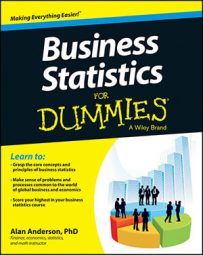In the field of risk management, you can measure the risk of a portfolio with the Value at Risk (VaR) methodology. The standard VaR model (known as the variance-covariance approach) is typically based on the assumption that the returns to a portfolio follow the normal distribution. But the assumption that financial returns are normal when they're not normal can have adverse consequences.
Because financial returns tend to exhibit "fat tails" in practice, the standard VaR model understates the true probability of large losses. (It also understates the true probability of large gains, but this is less important because risk management is focused on avoiding losses.) The potential to miss out on large losses due to an incorrect assumption of normality is one of the major weaknesses of the traditional VaR model.
Reliance on faulty models has the potential to lead to disastrous results. One perfect example of this outcome is the hedge fund Long-Term Capital Management (LTCM). LTCM failed spectacularly in 1998, requiring a $3.6 billion bailout from the Federal Reserve System to prevent a full-scale global financial panic.
LTCM was managed by two winners of the Nobel Prize in Economics: Robert Merton and Myron Scholes. Market participants lined up to invest with LTCM; surely, Nobel laureates could do no wrong! The fund sought out investments that exploited small price discrepancies between similar assets trading in different markets: assets that were seen as relatively underpriced were bought, and assets that were seen as relatively overpriced were sold. These investments weren't very risky, but the potential return was also quite low. To increase the potential profits from these trades, LTCM used enormous amounts of borrowed money to finance the trades. As a result, the potential return increased dramatically but so did the risk.
The fund was quite successful for its first four years, 1994 through 1997. But 1998 was a very different matter. In August 1998, the Russian government triggered a global crisis by devaluing its currency (the ruble) and defaulting on its debt, which led to huge losses for LTCM's positions. To make things worse, LTCM found itself unable to unwind its positions or raise new capital due to the ongoing panic. As a result, the Federal Reserve engineered a bailout of the fund to prevent damage to the rest of the financial system.
The use of Value at Risk by LTCM to measure the risk of its positions has been cited as one of the reasons for the fund's downfall. The likelihood of such spectacular losses was assumed to be extremely miniscule, much smaller than it actually was. When large losses started piling up, it was too late to make any changes in the fund's strategies.
Due to the shortcomings of the traditional Value at Risk methodology, other distributional assumptions have been attempted, such as the Student's t-distribution. Another approach that has been tried is known as Extreme Value Theory (EVT), which models only the left tail of the distribution of portfolio gains and losses. These approaches have the potential to increase the accuracy of the Value at Risk methodology but at the cost of substantially more complexity.

